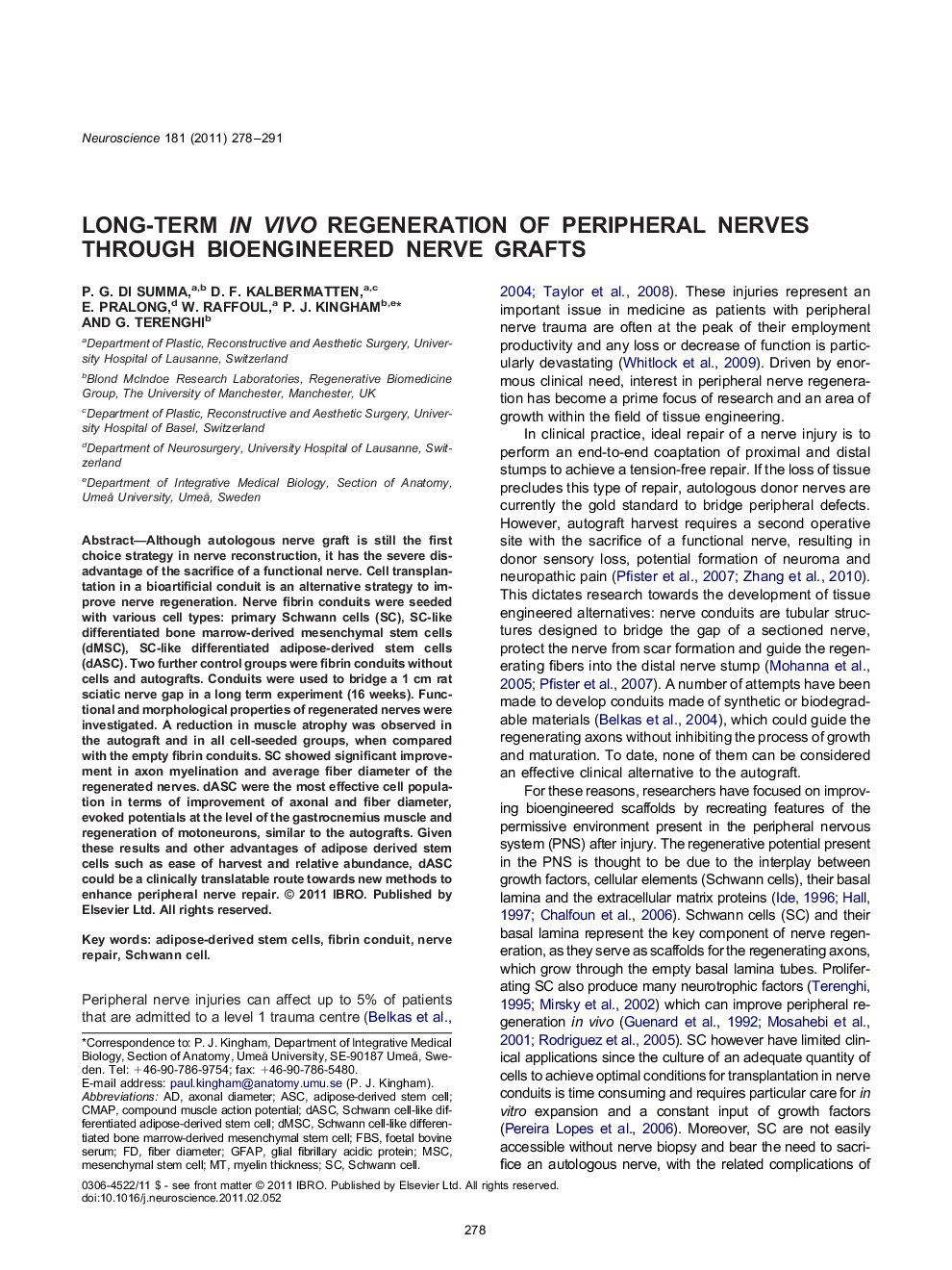| Article ID | Journal | Published Year | Pages | File Type |
|---|---|---|---|---|
| 4338931 | Neuroscience | 2011 | 14 Pages |
Although autologous nerve graft is still the first choice strategy in nerve reconstruction, it has the severe disadvantage of the sacrifice of a functional nerve. Cell transplantation in a bioartificial conduit is an alternative strategy to improve nerve regeneration. Nerve fibrin conduits were seeded with various cell types: primary Schwann cells (SC), SC-like differentiated bone marrow-derived mesenchymal stem cells (dMSC), SC-like differentiated adipose-derived stem cells (dASC). Two further control groups were fibrin conduits without cells and autografts. Conduits were used to bridge a 1 cm rat sciatic nerve gap in a long term experiment (16 weeks). Functional and morphological properties of regenerated nerves were investigated. A reduction in muscle atrophy was observed in the autograft and in all cell-seeded groups, when compared with the empty fibrin conduits. SC showed significant improvement in axon myelination and average fiber diameter of the regenerated nerves. dASC were the most effective cell population in terms of improvement of axonal and fiber diameter, evoked potentials at the level of the gastrocnemius muscle and regeneration of motoneurons, similar to the autografts. Given these results and other advantages of adipose derived stem cells such as ease of harvest and relative abundance, dASC could be a clinically translatable route towards new methods to enhance peripheral nerve repair.
▶Cell seeded fibrin conduits enhance nerve regeneration long term. ▶Cell seeded fibrin conduits reduce muscle atrophy following denervation. ▶Differentiated adipose stem cells are most effective population for nerve repair.
